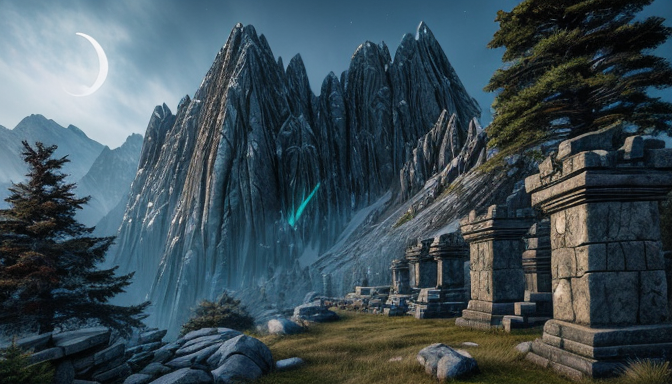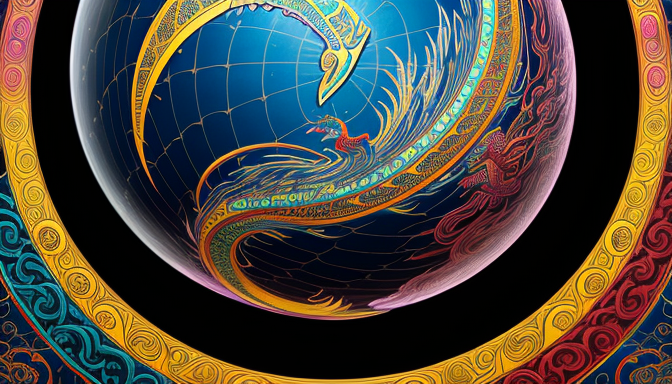Welcome to a journey through the strange and fascinating world of myths! Every corner of our planet is steeped in stories that have been passed down through generations, each one more bizarre than the last. These tales are not just mere entertainment; they reflect the values, fears, and aspirations of the cultures that birthed them. Imagine a time when the sun was believed to be a fiery chariot driven by a god, or when the ocean was thought to be home to beautiful mermaids who lured sailors to their doom. These myths serve as windows into the human psyche, offering insights into how ancient civilizations viewed their world.
From the terrifying creatures that lurk in the shadows to the heroic figures that embody the ideals of bravery and honor, myths are a rich tapestry of narratives that shape our understanding of existence. They often explain natural phenomena, such as thunderstorms or volcanic eruptions, through the actions of deities or magical beings. It’s almost like watching a gripping movie unfold, where every plot twist teaches us something profound about life and death.
So, why do these stories continue to captivate us? Perhaps it’s because they allow us to explore the unknown, to question our reality, and to connect with something greater than ourselves. As we delve into the myths of the underworld and the legends of mythical creatures, we uncover the shared human experience that transcends time and geography.
Myths of the Underworld
Many cultures have rich myths surrounding the underworld, often depicting it as a realm of judgment and transformation. Take, for instance, the ancient Egyptians who believed in a complex afterlife where the heart of the deceased was weighed against a feather. This feather, symbolizing truth and justice, determined whether one would enjoy eternal bliss in the Field of Reeds or face the fearsome devourer of souls. Isn’t it fascinating how these beliefs shape our understanding of life and death?
Similarly, in Greek mythology, the underworld, ruled by Hades, was not merely a place of doom but a realm where souls embarked on a journey of transformation. The River Styx, a boundary between the world of the living and the dead, symbolizes the inevitable passage we all must take. The stories of Charon, the ferryman, and the three-headed dog Cerberus guarding the gates add layers of intrigue and cautionary tales about morality and consequence.
These myths reveal deep-seated beliefs about what lies beyond our mortal existence. In various cultures, the underworld serves as a mirror reflecting human fears and desires. Here’s a quick look at some notable underworld myths:
| Culture | Underworld Name | Key Figure |
|---|---|---|
| Egyptian | Duat | Osiris |
| Greek | Hades | Hades |
| Mesopotamian | Irkalla | Ereshkigal |
As we delve deeper into these narratives, we find that the underworld is not just a place of despair but a canvas for exploring the human condition. Each myth offers a unique perspective, inviting us to ponder our own beliefs about mortality and the mysteries that lie beyond.

Legends of Mythical Creatures
This article explores some of the strangest myths and legends from various cultures, highlighting their origins and the fascinating beliefs that shape them. Discover the stories that have captivated imaginations worldwide.
Many cultures have rich myths surrounding the underworld, often depicting it as a realm of judgment and transformation. These stories reveal deep-seated beliefs about life, death, and what lies beyond.
When we dive into the realm of mythical creatures, we find ourselves enchanted by stories that have traveled through time and across continents. From the fiery breath of dragons soaring in the skies to the alluring songs of mermaids beneath the waves, these beings are more than just figments of imagination—they embody the fears, desires, and moral lessons of the cultures that birthed them.
Take, for instance, the Griffin, a majestic creature with the body of a lion and the head and wings of an eagle. This awe-inspiring beast symbolizes strength and wisdom, often found guarding treasures in ancient tales. Similarly, the Chimera, a fire-breathing monster with a lion’s head, a goat’s body, and a serpent’s tail, serves as a reminder of the chaos that can arise when nature is tampered with.
These legends not only entertain but also teach us important lessons. For example, the story of the Unicorn, often seen as a symbol of purity and grace, encourages us to value innocence in a world that can sometimes feel harsh and unforgiving. In many ways, these creatures are reflections of our own humanity, capturing our hopes and fears in vivid detail.
As we explore these ancient myths, we realize that they are not just stories; they are windows into the soul of a culture. Each creature tells a tale of its own, inviting us to ponder the mysteries of existence and the lessons that echo through the ages.
Frequently Asked Questions
- What are some common themes in myths from around the world?
Many myths share themes of creation, morality, and the afterlife. They often reflect cultural values and human experiences, like love, fear, and the struggle between good and evil. It’s fascinating how different cultures interpret these universal ideas!
- How do mythical creatures influence modern culture?
Mythical creatures like dragons and unicorns have become symbols in modern storytelling, movies, and art. They often represent our deepest fears or desires, serving as powerful metaphors. Think of them as the superheroes and villains of ancient times!
- Are there any myths that are similar across cultures?
Absolutely! Many cultures have similar myths, like flood stories or tales of a hero’s journey. This suggests a shared human experience, almost like we’re all telling different versions of the same great story!
- What role do myths play in society today?
Myths continue to shape our understanding of the world. They provide moral lessons, explain natural phenomena, and help us connect with our heritage. In a way, they’re like the original social media, sharing wisdom across generations!

Recent Comments